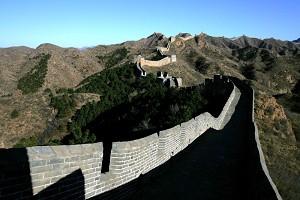TAIPEI—Under the support and coordination provided by the World Heritage Center of the United Nations Educational, Scientific and Cultural Organization (UNESCO), China and the Central Asian countries have drawn up a proposal to nominate the Silk Road as a world heritage site. The official application will be submitted in 2010.
According to a report from The Guang Ming Daily in Beijing, the director of China’s State Administration of Cultural Heritage (SACH), Shan Jixiang, said the World Heritage Center will submit the proposal to the 32nd Session of the World Heritage Committee in July 2008.
The proposal indicates that, due to the length and the large number of countries associated with the Silk Road, the world heritage application will be divided into several sections. China and other participating central Asian countries will pioneer the application task.
According to the application guidelines, in order for the Silk Road to make the world heritage final contestant list in 2010, China and the other participating Asian countries are required to submit an application to the World Heritage Center by September or October this year and host an on-site evaluation in August 2009.
In a recently released SACH time table the initial planning for the protection and management of the Silk Road will be carried out individually by the six related provinces no later than late April. The consolidation of the provincial plans will be conducted from May to August in order to formulate the application file for the China-portion of the Silk Road.
The World Heritage Center and SACH have scheduled to host the 4th coordination conference for China and other participating countries in early June this year to identify which countries will be involved in the effort. China plans to update its preparation work with data collecting in the conference.
The area and the number of countries covered by this application is unprecedented. In China alone, the Silk Road passes through Henan, Shaanxi, Gansu, Ningxia, Qinghai and Xinjiang provinces.
Based on extensive evaluation, in September 2007 SACH verified 48 locations deserving of international assistance for conservation and management along the historic Silk Road. The key sites located in western China include: Zhangqian’s tomb in Shaanxi, Guyuan Castle in Ningxia, Riyueshan Trail in Qinghai, Maijishan Cave in Gansu, and the Ruins and Cemeteries of Suoyang Castle.



